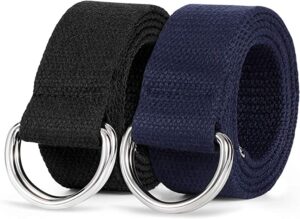Take Your Strength to the Next Level with Weighted Chin-Ups


For the past 10+ years I have been mostly doing bodyweight exercises and calisthenics for strength training. I would use dumbbells for isolation exercises as part of my hypertrophy routine but not much else serious with weights, until very recently. Regular pullups and chinups have been far too easy for a long time so to make things harder I would do a one arm pullup progression exercise with rings mantle chinups or towel assisted one-arm pullups.

The rings mantle chinups were my preferred exercise, which requires me to setup the rings outdoors on a tree or any high bar as it needs to be much higher than a doorway pullup bar. However, in January we had an unusual amount of rain in Los Angeles which forced me to train solely indoors. As a result, I decided to try a different pathway involving weights: Weighted Chinups.
I have about 70lbs in weights but I didn’t have a cushy dip belt that people typically use to attach weights to so I used one of my “double ring” belts made of canvas/polyester fabric initially. I would slide the belt through the plates, close the belt and then put my legs through the belt one at a time and hoist it up over my hip bones. Once the weights are set, I don’t need to undo the belt anymore, I just walked in/out of the belt until I got a proper “dip” belt. (They’re commonly calling “dipping belts” cause people do weighted dips with them.)
Chinups or Pullups?
I opted for close-grip chinups for the added benefit of biceps-hypertrophy. I figured, chin-ups feel significantly easier, so why not start a challenging exercise using the easier version anyway? No need to kill myself.
I started with 10 and 15 pounds to be on the safe side and found it quite easy and quickly moved to add more weight.
The benefit?
You will feel a great, novel stimulus in your back and biceps. Every set is taxing in a whole new level of satisfaction. It will also help speed you toward the possibility of doing a one-armed-chinup or gaining the front lever. (The front lever is simply a straight arm pulling exercise and pullups are the bent-arm version of it, assuming the straight-arm-strength is there). And did I tell you it will make you feel good? I mean like, really good.
One important thing to note is that I often see peoples form break down tremendously when doing weighted pullups/chinups and they cheat a lot.
When watching videos of weighted pulling work, I would consistently see the same theme of “ego lifting” (lifting more weight than they should): They would barely be able to bring the chin over the bar. It makes me question how good of a range of motion (ROM) these people had when doing unweighted pulling work, too.
The last thing I wanted to be was those people so for every rep I make sure I am doing a proper scapular pull (pulling the shoulders down , away from the ears, before the elbows bend), and pulling up until my chin is well over the bar, as high as I could.
And another thing: Make sure the last rep is a complete, full-ROM negative. People tend to put the feet down on the last rep before the negative is complete because they’re exhausted by then, but making it a habit to end that rep as cleanly as possible is a good habit.
And in regards to tempo? I would do it in the normal fashion: Pull up as fast/explosively as possible without sacrificing form.
As far as the legs go, do not raise your thighs and knees up so you’re not cheating by kipping. For more info about the lower-body-form, you could read my comment on reddit here.
Now that it has been a few weeks of doing this, I have moved onto 50lbs, which is about 30% of my bodyweight. It’s not an extremely impressive ratio compared to people who have been doing this for a long time, but it is something I’m really happy with considering it’s only been 2 months.
Here’s a quick demonstration of my first session with a new weight of 50lbs. I look like I am pulling up slowly, but I am actually trying to pull up as fast as possible, the intention is what matters:
What is a good amount of weight you ask?
Well, first of all, you should be able to do 3 sets of 8 pullups or chinups before getting into the world of weighted pulling work. And after that, go incrementally higher by 5 or 10lbs. But what’s a good amount of weight? In terms of percentage of your own bodyweight…
- 20% = good and very achievable for my readers (that’s you!)
- 50% = highly respectable and a very strong base to work towards a one arm chinup
- 75% = fantastic and possible can pull off one arm chinups
- 100% = excellent
- 150% = elite
- 230-250% = world records run around here
Also, the relationship is not linear and depends on how tall/short and heavy/light you are. Smaller guys have the advantage with relative strength (better power to weight ratio) and bigger guys are going to have the advantage of raw absolute strength.
It is far easier for a smaller man to achieve a 1.5x bodyweight pull-up than it is for a larger man. In other words, you will find a lot more small athletes who can do a pullup with 1.5x (150%) of their bodyweight rather than larger athletes.
Weighted pullups destroy the excuse of being too heavy for pullups
Normally when you gain weight, you quickly notice your performance suffers with bodyweight exercises due to the worsening relative strength and nothing makes it all the more obvious than pullups. They are the most sensitive to extra weight (since you’re pulling almost your entire body) and highly punishing of excess body fat.
But now I am pulling up as if I am a 230lb person and still able to achieve 30+reps spread over 5 sets.
How did I achieve it?
Really simple: I used the minimal program which uses a descending rep-scheme just every other day:
- I started with 15lbs, being able to perform 7,6,5,4,3 until I reached 8,7,6,5,4.
- I then did the same thing with 10 additional pounds (25lbs), then another 10lbs (35lbs).
- And most recently upped it by 15lbs to 50lbs total (because it’s easier to just use two 25lb plates) which brought my reps down to 6,5,4,4,3 and I will build it up until I reach 8,7,6,5,4 which will take about 8 more workout sessions (2 weeks). This progress has felt absolutely great for just 2 months time.
The results?
I tried normal, unweighted pullups the other day after not having done any unweighted pullups for weeks on end and I flew up and was able to pull my god damn hands down until they were well below my chest. I literally feel like superman and explosive muscle ups should feel effortless next time. This is definitely another tool that can be used for achieving chest-to-bar pullups.
If that isn’t a good enough reason to do it, my biceps have noticeably increased hypertrophy (probably my back, too) and the whole thing doesn’t even take that much more time than usual. I just need more rest time between sets as it’s more taxing.
And the best part? You feel like a god damned beast when you’re able to pull that kind of weight effortlessly for so many reps.
The drawback? I won’t be able to replicate this easily at the park unless I lug heavy ass weights like a weirdo.
Fun Side Story: At muscle beach we used to have a couple big, smooth rocks that weighed around 30 and 60lbs and when we were done with it we would “hide” them in plain-sight by putting them next to other plants so it looked like it was part of the natural landscaping. We would use them for weighted squats, overhead press and even flexibility training. Sometimes we would find them moved around to a completely different part of the beach. We never knew who was using them and for what. One day, those boulders disappeared, never to reappear again.
Warnings
I strained my upper traps and neck muscles early on in my training which forced me to take several days off and that was with a measly 15 additional pounds. So definitely don’t go hard in the beginning.
- Allow the body to adapt to the new weight.
- Allow the body to strengthen the weak links in the chain in the early stages before just piling on more weight willy nilly.
- Try to pull yourself up FAST with this additional weight. Even if it doesn’t look fast, what’s important is the intention.
- And don’t do extreme things with your neck such as looking straight up at the bar.
So, you want to start?
- Grab this dip belt from Amazon. (It’s only $32, about $8 cheaper than most and just as good as the $40 versions.)
- Watch this video on how to use such a belt.
- Get these weights from Amazon (or from Craigslist or OfferUp in case there’s a good deal locally).
- Perform full range and never sacrifice form for weight.
- Start with a small amount of weight and add slowly, less is more!
Review the rest of the the advice in this blog post and start murdering those (weighted) chinups or pullups. This “new” exercise has been a breath of fresh air for what had become quite a boring and easy exercise. I look forward to each session and I look forward to the day that I hit the limits of what my doorway pullup bar can handle!






